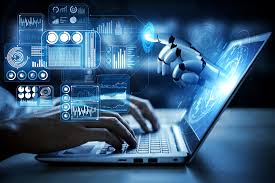The gadgets, systems, and surprises shaping our lives in ways we never imagined
Close your eyes and imagine waking up in 2030.
You don’t reach for your phone. Why? Because your bedroom wall is your phone now—embedded with voice-responsive surfaces that display messages, weather, and calendar reminders the moment your eyelids flutter open. Coffee’s already brewing. Your wearable health band noticed your cortisol levels and started the pot early, just the way you like it. And your fridge? It reordered your almond milk last night after a sensor realized you were down to a few sips.
Welcome to a world that’s no longer futuristic—it’s just life.
A Seamless Digital Ecosystem
In 2030, technology won’t be something you hold in your hand. It will be something that surrounds you—sometimes even without you knowing it. It will anticipate, adapt, and act before you do. It won’t ask, “What do you want me to do?” It’ll simply do it.
The fusion of artificial intelligence, IoT (Internet of Things), and ultra-fast connectivity will create a seamless digital ecosystem that learns from us constantly. Devices won’t just be “smart”; they’ll be intuitive, emotional, and deeply personal.
Your Home, But Smarter
In less than a decade, the idea of a “smart home” has evolved from voice assistants to fully autonomous living spaces.
Your lights dim and brighten depending on your mood—detected via neural sensors in your wearable tech. Your thermostat speaks to your fitness tracker and adjusts the room temperature after your workout. Even your shower syncs to your preferred water pressure and temperature the moment you step in.
But it’s not just about comfort.
These interconnected devices dramatically reduce energy waste, water usage, and carbon footprint. A home in 2030 isn’t just smart—it’s ethical.
Health Tech That Knows You Better Than You Know Yourself
Remember those yearly doctor visits? By 2030, daily health tracking is the norm.
We’ll wear ultra-thin patches or micro-implants that continuously analyze biomarkers: blood sugar, hydration, inflammation, even early signs of disease. These devices sync with virtual health dashboards, alerting both users and AI-assisted healthcare providers the moment anything looks off.
One woman in Canada recently credited her wearable tech with saving her life—it detected abnormal patterns in her heartbeat long before she felt any symptoms. She received early intervention for a heart condition that could’ve gone unnoticed for years.
It’s personal. It’s preventative. And it’s powerful.
Transportation Reinvented
Flying cars? Not quite. But ground travel in 2030 looks drastically different.
Self-driving cars aren’t just prototypes—they’re everywhere. Public transport systems are now powered by AI that reduces wait times, optimizes traffic flow, and even predicts delays before they happen.
And for the eco-conscious? E-bikes, solar scooters, and hydrogen-powered buses are the new norm. It’s not just about getting from A to B—it’s about doing it cleanly, safely, and in style.
Workspaces That Work For You
By 2030, the “office” is more a concept than a place.
Holographic meetings allow people from Tokyo, Berlin, and Cape Town to sit around a virtual table and brainstorm in real-time. Noise-canceling smart pods adjust sound levels based on your focus cycles. AI tools schedule your day, flag emotional burnout, and even recommend personalized meditation breaks.
And for the visual creatives? High-resolution technical images can now be generated and edited via simple voice commands or even thought-based inputs, thanks to the rise of brain-computer interfaces.
It’s no longer about just productivity—it’s about well-being at work.
Real-Life Example: A Day in the Life of Amira
Let’s step into a real-life example. Meet Amira, a 34-year-old product designer living in Amsterdam.
At 7:00 AM, Amira’s AI-powered alarm gently wakes her with soft lighting and ambient sounds based on her sleep cycle data. She doesn’t grab a phone. She glances at her smart mirror that displays her schedule, weather updates, and wellness stats.
Her breakfast is prepared automatically—based on her current fitness goals and nutrient levels tracked by her wearable.
By 9:00 AM, she’s logged into a virtual coworking space. Her team from around the world appears as holograms. During the session, she uses AI tools to generate technical images of a product prototype. No software, no complex commands. Just fluid, intuitive creation.
At lunchtime, her wearable reminds her to hydrate and suggests a short meditation session based on her rising stress levels. The rest of the day flows with ease—optimized by tech that feels more like a teammate than a tool.
What About Privacy?
This future sounds dreamy—but it’s not without concerns.
The deeper integration of technology into daily life raises big questions about privacy, data ownership, and ethical usage. Who owns the data from your health implant? Can an AI fire you? Should it?
Fortunately, strong data rights legislation and decentralized encryption models are already in development. By 2030, we expect more user-first platforms where individuals, not corporations, control their digital footprints.
Education Gets a Digital Soul
Classrooms in 2030? Optional.
Students across the globe will learn through immersive experiences using VR and AR. A history lesson could take you to the pyramids of Egypt. A biology class might have you interacting with 3D heart models, exploring blood vessels in real-time.
Educators will use platforms powered by adaptive AI to understand learning patterns, offering personalized paths for each student. Technical images will help make complex subjects like physics and engineering accessible—even exciting—for students who once struggled.
Final Thoughts: It’s Still About People
Here’s the thing: as advanced as technology becomes, the heart of it all remains unchanged—it’s about us.
The tech of 2030 doesn’t replace people. It supports us. It enhances our routines, protects our health, makes learning more vivid, and creates deeper connections across distances.
But it’s up to us to use it wisely. To build systems that include everyone. To choose tools that empower rather than control.
Because in the end, the most important part of technology… is the human behind it.
